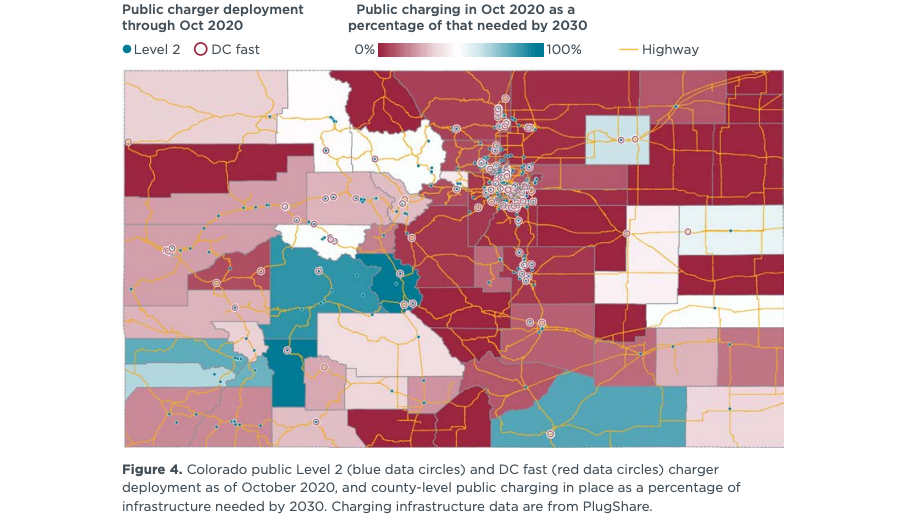This study analyzes the number, type, and distribution of EV chargers needed to meet Colorado’s 2030 electric vehicle sales goals. It quantifies the public, workplace, and home charger needs for passenger vehicles at the county level and estimates the costs to meet these infrastructure needs.
To support 940,000 electric vehicles, the number of public chargers will need to grow from the 2,100 installed in 2020 to 7,600 by 2025 and 24,100 by 2030. Workplace and home charging will need to increase to approximately 47,000 chargers and 437,000 chargers, respectively, by 2030. Counties that have experienced relatively higher EV adoption through 2019, such as Denver, Boulder, Jefferson, and Arapahoe, will require more home, workplace, and public charging more quickly.
The needed statewide investments in public and workplace chargers are about $34 million for 2021–2022, about $150 million for 2023–2025, and about $730 million for 2026–2030. Of the total investment needed through 2030, DC fast chargers represent about 35%, followed by home (30%), workplace (25%), and public Level 2 (10%). The Denver and Boulder metropolitan areas, which have relatively high EV uptake and lower infrastructure deployed in 2020 as a percentage of what will be needed by 2030, would benefit from relatively greater near-term infrastructure investments. Near-term investments in travel corridors should also be steered towards areas where the local EV market may not be large enough to attract the necessary near-term public charging investment from the private sector.
Home chargers represent about 84% of the total chargers needed across Colorado and supply more than 60% of the EV energy demand in 2030. Alternative residential charging such as curbside or streetlight chargers in metropolitan areas with a significant population of multi-family housing dwellers would ideally be deployed to improve the affordability, accessibility, and practicality of EVs for all prospective drivers.
source:theicct
Post time: Jun-15-2021

